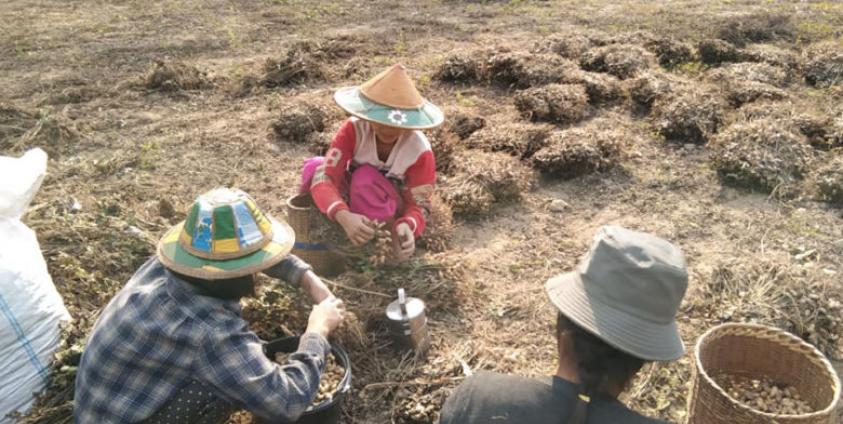Peanut farmers forced to flee fighting in southern Kawkareik, Karen State are now facing reduced prices for their harvested crops. The farmers forced into hiding at the time of harvest are now having to sell their produce at reduced prices.
“Our peanuts have been harvested. We had to harvest the peanuts during the day and flee [the fighting] at night. We had to harvest and shell them in a rush. Some were not exposed to the sun [to dry]. We usually sell them as soon as they are shelled. In the past, our peanuts prices were good, as only properly dried peanuts were sold. Now, some of us are selling as soon as we have finished harvesting. We are having to sell at a loss because we had to flee the fighting.”
As the Burma Army troops were attacking areas controlled by the Karen National Liberation Army (KNLA) and firing heavy artillery into villages, peanut farmers running from the fighting found it difficult to harvest their crop. Farmers said the fighting had also scared peanut buyers away.
Despite the price of a basket of dried peanuts with shells from southern Kawkareik increasing slightly from 13,000 kyat to 15,500 kyat this year, the number of buyers going to the area to buy the crops decreased due to the fighting.
A woman peanut trader explained the difficulties to Karen News. “There are a lot of people who want to sell their peanuts. We bought them because we wanted to export them to Thailand. We could only go and buy around the areas from Kyaikdon to Kyate village. Previously, we could go further into Thone Set Thone Su village. Now, because of fighting, I couldn’t go there. People from that area [conflict] are not able to get to the city to sell their crops because of the fighting. They say there are few buyers.”
Even though it is cheaper to buy peanuts that have not been dried, most peanut traders only buy dried peanuts, they last longer and are not prone to mold and other damage as undried ones are.
Local villagers in southern Kawkareik have been fleeing fighting since early January 2022. Burma Army attacks in the area have displaced as many as 20,000 villagers. Many farmers are unable to tend their crops because of the fighting. Cattle, goats and other livestock set free as their owners fled the fighting have also destroyed crops and plantations.
Residents from Ka Maing Kone, An Pha Lay, Kawt Nwe, Ywar Thit, Ywar Thit Kone, An’ Klaw, and other nearby villages are still unable to return to their homes. Some local risk returning to their villages during the day to tend crops, but at night seek the safety of makeshift displacement camps.
Many villagers told Karen News returning to the village came with risk of landmines or being shot by Burma Army soldiers who have shoot-on-sight orders and point to a recent death of a woman from Ka Maing Kone villager by indiscriminate Burma Army shelling. A man was also badly wounded in the same incident.








